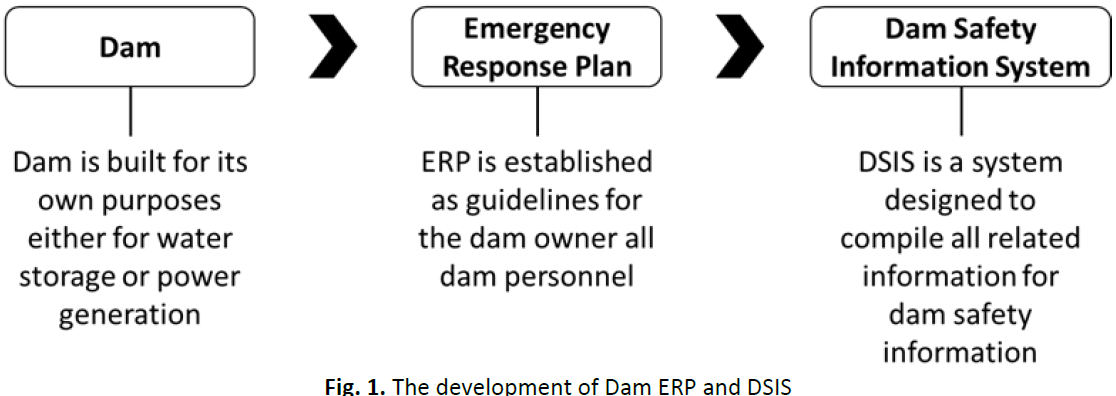Implementing a Dam Safety Information System for Emergency Response in Hydro Power
DOI:
https://doi.org/10.37934/sijese.6.1.3847Keywords:
Dam failure, information system, emergency plan, dam safety, disaster managementAbstract
A dam is built for many purposes. The number of dams constructed worldwide keeps increasing. There are 104 dams in Malaysia, with 83 located in Peninsular Malaysia and 21 in Labuan, Sabah, and Sarawak. Out of the total number, 81 are classified as large dams. The remaining 23 are considered small dams. Sixteen were built for hydropower, eleven for irrigation and agriculture, five for flood mitigation and the rest for water supply or other industries. Instead of benefiting economic development, the probability of dam failure is also a concern to the community in the downstream area. In order to mitigate the risk, dam owners have developed their emergency response plan as a mitigation measure during dam emergencies. As standard practices, the dam owners had developed a dam safety emergency response plan in a printed document as a reference manual during an emergency. In order to ease access to these documents, a system was developed to compile all of these documents in one centralized system called Dam Break Information System (DBIS). A pilot project was conducted for TNB hydroelectric dam, namely Dam Break Information System (DBIS). This app was developed in 2011, known as DBIS 1.0 and was then enhanced to DBIS 2.0 in 2015. Then, in 2022, DBIS 2.0 was upgraded to DSIS (Dam Safety Information System), which Android devices can access. The main objective of the new version of the DSIS is to allow multiple authorized persons to access and update the related information as necessary. This paper revolves around developing Dam emergency information systems to create better communication and effective response systems by dam owners in managing the risk of dam emergencies.









